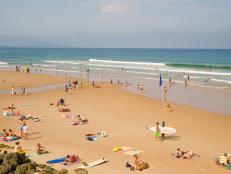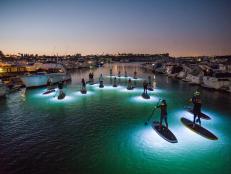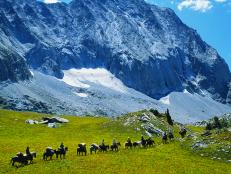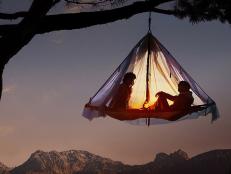7 Adventure Sports + the Stories of Their Origins
Ever wondered how and where your favorite adventure sports began? When did people start thinking jumping out of a plane was a good idea? Or paddling down treacherous rapids would give them a thrill? Learn how these popular outdoor sports got their start.

Related To:
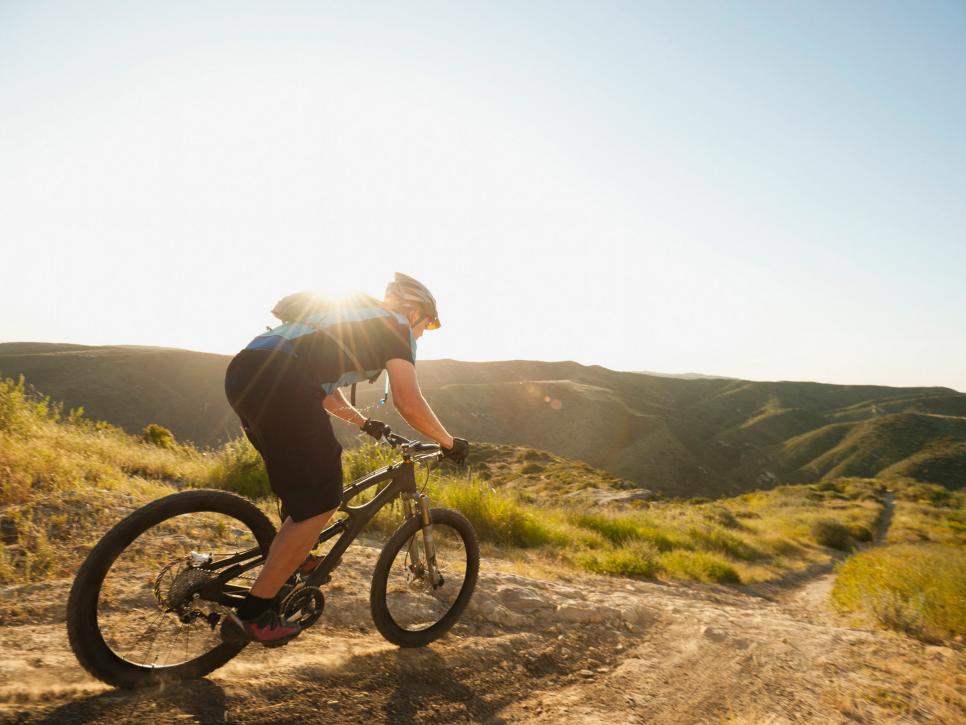
Photo By: Tetra Images - Erik Isakson
Photo By: Scott Markewitz
Photo By: Dennis Welsh
Photo By: yulkapopkova
Photo By: David Peevers
Photo By: Underwood Archives
Photo By: Vince Cavataio
Photo By: Tim Clayton
Photo By: naruedom
Photo By: dzphotovideo
Mountain Biking
Mountain Biking
Whitewater Kayaking
The word “kayak” means “hunter’s boat” and comes from the Inuit and Aleut tribes of Arctic North America who first used this type of small boat for hunting. They made the boats out of light driftwood or from stretching animal skins over frames made from whale bones. The kayak eventually made its way to Europe in the 1800s and people started using it for leisure activities. A man named Adolf Anderle is often credited as the first person to kayak down the Salzachofen Gorge in 1931, leading to the introduction of whitewater kayaking as the adventure sport we know today. The International Scale of River Difficulty was established soon after, which is the same system used today. In 1936, the Olympics in Berlin included kayak races. Fiberglass or “rigid” kayaks were invented in the 1950s, and the sport started to become more mainstream in the 1970s. Today, the Olympic Games feature more than 10 types of whitewater kayaking events.
Snowboarding
In 1965, a man named Sherman Poppen went into his garage on Christmas Day, attached two skis together and then "surfed" down a hill in his backyard. Poppen patented his product and sold it to the Brunswick Corporation. The Snurfer, as they called it, evolved into the modern snowboard and a new adventure sport was born. Snowboarding grew in popularity over the next several decades. In the 1980s, ski resorts started allowing snowboarding, and in 1998, the sport debuted at the Winter Olympics.
Rock Climbing
While forms of rock climbing have existed out of necessity for centuries, the sport of rock climbing didn't come along until the 1800s. There are three main places credited with playing a role in the birth of rock climbing as a sport: Elbe Sandstone Mountains in Saxony, Germany, Lake District in England and Dolomites in Italy.
In the U.S., important climbs that signaled rock climbing to be an extreme sport include John Muir's on-sight free solo of Cathedral Peak in Tuolumne Meadows, California in 1869 and George Anderson's summit of Half Dome in Yosemite, California in 1875. Technical advancements in gear throughout the 1900s widened the possibilities for rock climbing, such as the modern piton, steel carabiner, stoppers/chockstones and nylon rope. In the 1970s, clean climbing ethics compelled climbers to shift away from the use of pitons, known to cause permanent damage to the rock. Tom Frost and Yvon Chouinard, the founder of outdoor company Patagonia, invented hexcentrics, and later Ray Jardine invented the spring-loading camming device, called a cam. Both of these inventions functioned as removable forms of protection that left no trace on the rock.
Surfing
Surfing
Bungee Jumping
The roots of bungee jumping stem from what’s known as land diving, a ritual practiced on Pentecost Island in the South Pacific country of Vanuatu. The legend is that the ritual started hundreds of years ago after a woman grew tired of her constantly abusive husband, and while trying to escape him, ran to the top of a mountain, tied vines to her feet and jumped off. When her husband caught up and saw she safely landed the jump, not seeing the vines, he jumped to meet her and fell to his death. The women in the village reconstructed the event each year, but the men soon took over to address their historical shaming and prove their courage to the women.
Today, the ritual, referred to as the Naghol, is performed by males of all ages, but particularly young teenagers. They climb a wooden tower about 75 feet high and jump off with only vines tied to their feet. The ritual represents an act of bravery and the transition into manhood. Most survive, but it’s common for boys to settle disputes with family members before they make the jump in case they die or get severely injured. One jumper died with Queen Elizabeth II present in 1974 when she traveled to Vanuatu to witness the ritual. The ritual also serves as a symbolic blessing of the soil to yield a fruitful yam harvest.
Bungee Jumping
Inspired by the Vanuatu ritual, a group from Oxford's Dangerous Sports Club performed the first modern bungee jump off the Clifton Suspension Bridge in Bristol, UK on April Fool's Day in 1979. After seeing a video of the Dangerous Sports Club group, AJ Hackett and his friend Henry van Asch set out to create the first commercial bungee jumping company to bring the extreme sport to the masses. In 1988, they opened AJ Hackett Bungy in Queenstown, New Zealand, giving it the unofficial nickname as "The Adventure Capital of the World".
Skydiving
The origin of skydiving starts with the history of parachuting because, well, it plays a pretty important role in this extreme sport. The Chinese are thought to have used woven tarps as early as the 1100s to slow descents from high ridges. Though he never tested them himself, Leonardo Da Vinci drew blueprints of triangular parachutes that were successfully tested years later. In 1797, Andre-Jacques Garnerin completed the first successful jump from a hot air balloon. In 1912, Captain Albert Berry made the first successful jump from an aircraft at Jefferson Barracks near St. Louis, Missouri. Today, skydiving has evolved from an invention of necessity and military purpose to an extreme sport people do just for the thrill.

